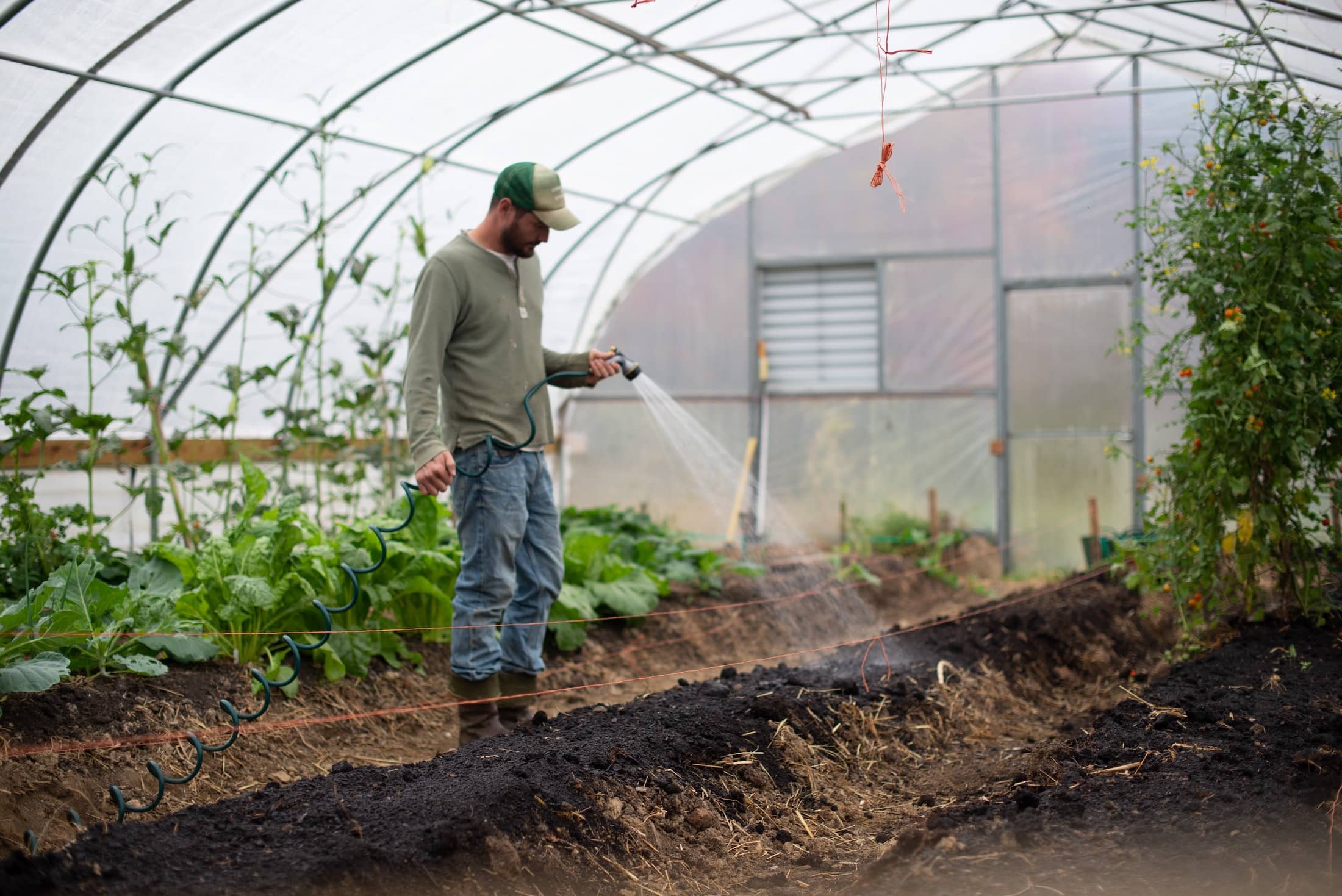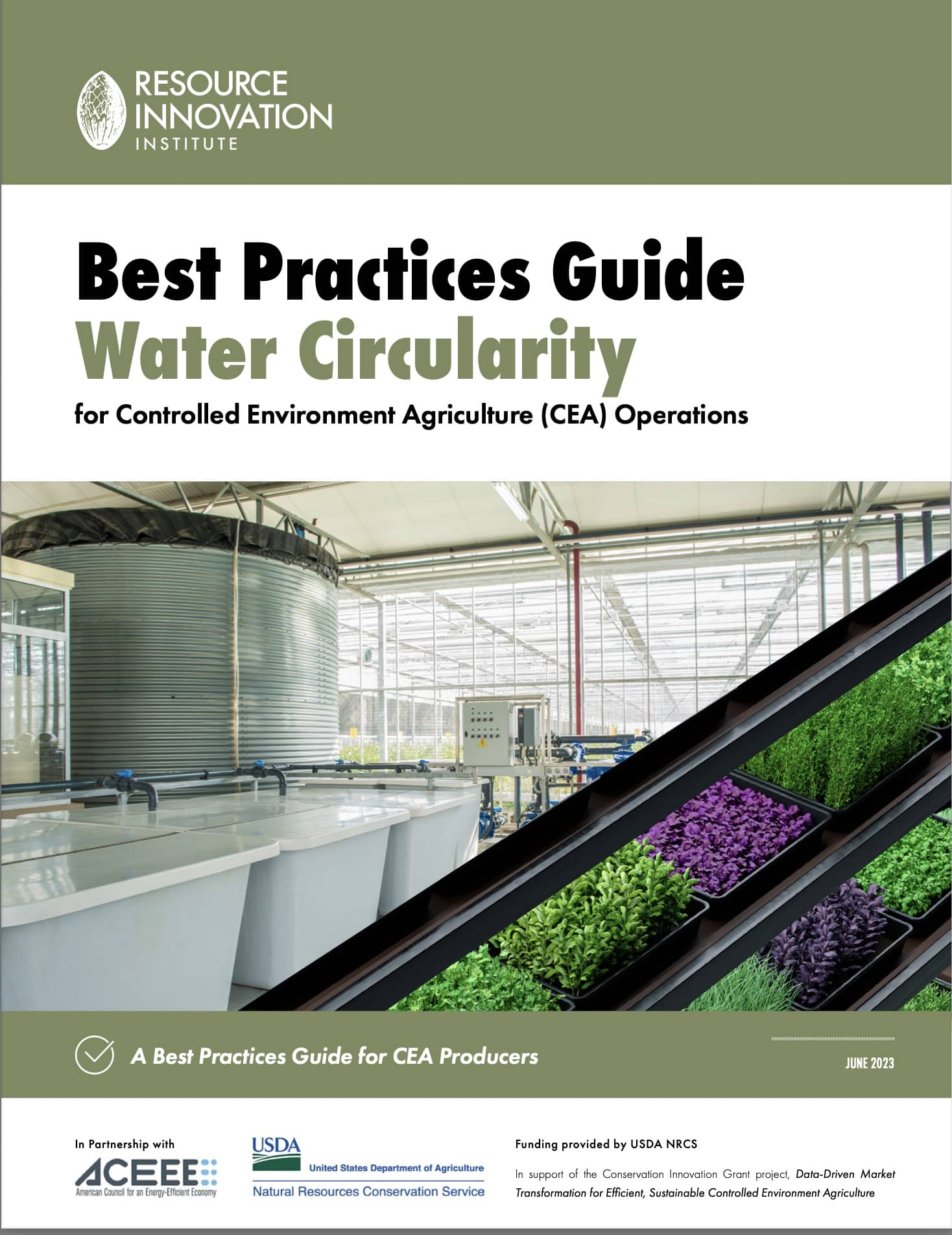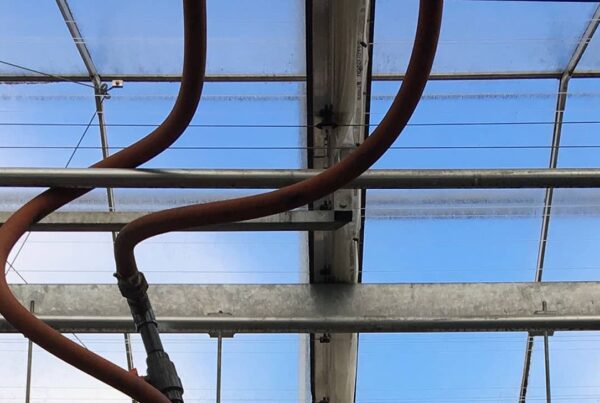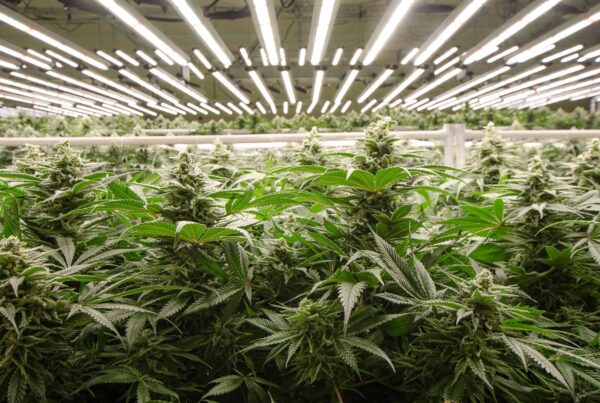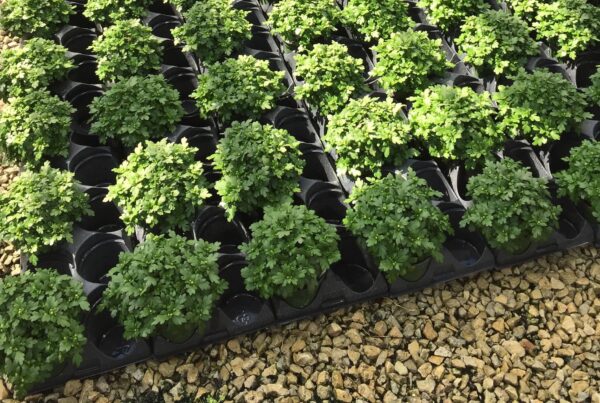Sustainability is the bedrock upon which the future of food production rests. As the world grapples with the challenges of climate change, resource scarcity, and environmental degradation, the need for innovative solutions in agriculture has never been more pressing.
To address these issues, CEA facilities are increasingly pursuing Minimum Liquid Discharge (MLD) or even Zero Liquid Discharge (ZLD) status.
RII defines MLD in the Controlled Environment Agriculture Water Circularity Best Practices Guide as any circularity system that still includes “the elimination of gray water that is technically or economically unfeasible to remediate for irrigation, such as sanitary washdown water (used for cleaning and disinfecting), or concentrated brines from some water purification processes.”
For CEA operations getting started on their water circularity journey, ZLD status may seem out of reach. However, building a ZLD CEA facility should not be viewed as a zero-sum game between resource efficiency and business sustainability, but rather as a long-term project that helps reduce operating costs and environmental pressures as you scale your business. Balancing business realities with efficiency goals is key to completing this journey.
Here, we explore how CEA operations can start thinking about (and building) water circularity systems on the way to achieving ZLD status.
Download Resource Innovation Institute’s Water Circularity Best Practices Guide for more information, expert insights, and tips on improving CEA facility water usage, including how to design and build toward becoming a Minimum Liquid Discharge facility, as well as policy considerations for stakeholders to promote and utilities to adopt.
Plan ahead
As with any project, planning can help avoid costly mistakes that can limit your water-saving potential. Dane Sheldon, Director of Business Development at RII member AQUASGROUP, says “[Often,] your water system or future requirements get thought about after the fact, and you’re hamstrung by the space you might have for equipment, or where you can and cannot distribute water or collect water. Whether building a new facility or retrofitting an existing structure, taking the time to consider water usage, wastewater generation, and opportunities for recovery and/or reclamation at the outset will avoid costly modifications or missed opportunities down the line.”
Thankfully, with proper foresight, scaling a water circularity system is achievable. “In your business plan, think about where you want to start, but also where you might get to. A lot of things in water treatment can be modular and you can scale up by duplicating systems,” Sheldon advises.
At a minimum, knowing your primary water source and its quality and your protocols and options for handling waste (whether liquid or solid) will help you define what systems and processes you should implement to set you up for success.
When planning for a phased build, certain items need to be determined early on to avoid later additional costs, explains Carlos Salazar, CEO of Bear Ag and Tru-Zero. “You can scale, and people certainly should scale, but there are certain things that I recommend they invest in for the long run from the beginning,” he says. “The biggest obstacle is going to be in real estate: having space for tanks, having space for the systems.”
Ensuring your facility has the power capacity to scale is another important factor to consider early on. “If I bring in only enough of a power upgrade to run the system currently, when I go to scale, I’m going to have to then pay for that upgrade again, and then … you have to go through permitting again,” Salazar says.
Achieving MLD status
Aiming to become a MLD facility is a good middle target for operators just getting started on their water circularity improvement projects as there are many lower-cost opportunities to make strides in this area.
Building a water circularity system starts with having the right pieces of equipment–and it will take multiple systems to recirculate, filter, and purify your facility’s water. All incoming water will go through some sort of mechanical filtration system in a step called pre-filtration. These include cartridge filters, sand filters, and carbon filters, among others. Following the removal of physical particulates, a chemical treatment may need to be performed if the water’s pH is not ideal for use in CEA–this typically involves injecting some kind of acid.
Once the water has been filtered and balanced, the vast majority of operations will run it through a reverse osmosis (RO) unit, and this is the first place that efficiencies can be found. RO units have varying degrees of efficiency. Some units reject up to 40% of the water as waste brine, while high-efficiency units can purify up to 80% of the water they filter, leaving only a 20% waste stream.
“The efficiency of RO systems is related to their design, but also the conditions of incoming water, appropriate pre-treatment, and maintenance,” Sheldon notes. “What’s the quality of your incoming water? What’s the temperature of your incoming water, do you have appropriate removal of solids and chlorine?”
ZLD facilities may aim to recover and completely strip fertigation leachate of its electrical conductivity (EC) using a reverse osmosis (RO) system. While doing so can help recover a significant amount of purified water, the leftover brine can be extremely difficult and costly to clean and recirculate, making it an economically difficult decision for cash-strapped operations.
“Processing rejects from RO, or recovering leachate and trying to completely repurify it.. at some point, you’re either spending more money or you’re spending more resources like energy than maybe is really justified to get to zero liquid discharge. When evaluating these more difficult waste streams, it is important to evaluate cost and sustainability metrics against alternatives i.e. treat for discharge, treat for recovery, haul, etc.,” Sheldon says.
“Particularly in the northeast or in cold climates, water temperature is critical to their performance, with a significant drop off in efficiency at reduced temperatures” he notes, adding that most RO efficiency ratings are stated for water coming in between 75 and 77 degrees Fahrenheit. Odds are the water source will not be at these ideal temperatures in cold climates.
While using boilers or other energy-intensive heating systems to warm up the water before RO filtration would be counter to resource efficiency goals, “anything you can do to passively warm your feed stream, like have an equalization or holding tank in your facility that feeds that RO and gets to warm up the water just by the ambient temperature in the facility,” will improve the RO’s system efficiency, Sheldon shares. “As a rule of thumb, for every two-degree increase, that efficiency goes up by 3%.”
Another easy(ish) water circularity solution is to capture HVAC condensate and/or rainwater. Both of these nearly pure water sources can be recirculated with little additional treatment. They also can reduce the amount of new water brought into the facility, and as such help decrease utility bills.
“HVAC condensate is a very clean water source, basically pure,” Sheldon says. “You might pick up some things depending on the construction materials of your plumbing or the air handling system, and you do have to control bacterial and algae growth. But overall, [HVAC condensate is a] great water source that shouldn’t be thrown away.”
Making the ZLD jump
A ZLD facility takes that MLD process one step further by completely closing the water circularity loop, bypassing drain-to-waste. However, closing that loop can come with significant energy and upfront costs. The economic realities of CEA in North America may force operations to consider a phased-build.
One source of wastewater that can be particularly resource-intensive to remediate is the RO brine. As noted in the Water Circularity Best Practices Guide, “reject water is the brine of concentrated nutrients and contaminants created by membrane filtration and the water used to backflush rapid sand and cartridge filters. Treating reject water, whether on-site or at a municipal treatment facility, is often energy-intensive.”
A best practice identified in the guide is to minimize the use of RO purification systems by using rainwater or condensate as pure water sources. CEA operators can reduce rejected water by nearly two-thirds by using this method.
Another way to minimize the use of RO systems is to reuse fertigation leachate without completely stripping it of its electrical conductivity (EC). However, careful attention must be paid to the exact nutrient content of that runoff to avoid nutrient stacking.
“In cannabis, nutrient stacking is something that’s very, very real,” Salazar says. “There already have been several systems out there that have attempted this in cannabis and have failed miserably, and the reason for that is because they’re just measuring the overall [EC content], but they’re not measuring the individual concentrations of nitrogen versus magnesium versus potassium versus zinc versus all the 16 other chemical compounds that are in the water.”
Some crops, like lettuce and other leafy greens, are less sensitive to nutrient stacking, Salazar adds, “so [reusing fertigation runoff] is very doable and it’s very common and it should be done, in my opinion, with any crop that it can be safely done with.”
(Water management system designers are developing solutions that will measure EC and specific nutrient content at both the point of delivery as well as the runoff, but that technology is most likely a few years away from being commercially available.)
It is unlikely that CEA facilities will be able to eliminate the use of RO systems in their water circularity plans, but there are ways to recapture all water from the briny discharge. Most of the solutions involve some kind of distillation that leaves behind a solid waste byproduct devoid of almost all moisture. By recapturing and recirculating that condensate (rather than letting that steam escape outdoors), CEA operators can close their facility’s water loop.
However, distillation typically requires a large energy input to boil off the water from the brine, meaning CEA operators need to evaluate the energy costs against the water savings potential when calculating the return on investment (ROI) of these solutions.
In some cases, local regulations may force growers to adopt ZLD systems. For example, “the city of Riverbank, California has told my customer ‘you are not allowed to dump any water into our sewer system,” Salazar shares. “When you look at it from that standpoint, … your ROI is zero years because, without the system, you don’t have a facility.”
Closing the loop (of this blog)
In the rapidly evolving CEA realm where sustainability is the linchpin for the future of food production, the imperative for innovative solutions couldn’t be clearer amid the backdrop of climate change, resource scarcity, and environmental degradation.
While ZLD may seem like an ambitious goal, it should be seen not as a trade-off between efficiency and sustainability, but as a long-term endeavor that ultimately reduces operational costs and environmental impact. Planning, understanding your water source, and embracing modular scalability are foundational steps toward achieving water circularity. As the industry journeys toward water circularity and, eventually, ZLD, it becomes clear that the nexus of resource efficiency and environmental responsibility holds the key to a sustainable future in CEA.
Meet Our Members
Thank you to our members who participated in this blog. Read more about their organizations below:
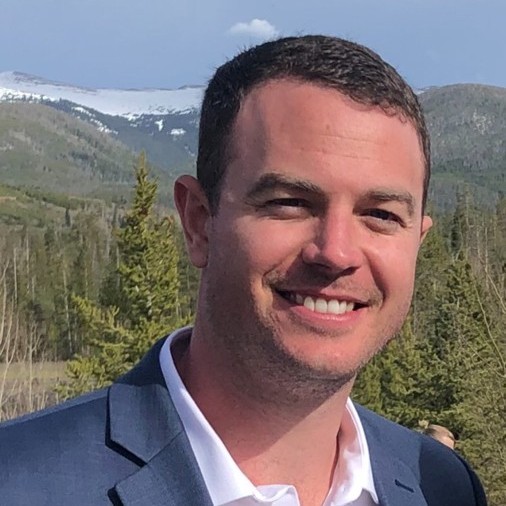
Dane Sheldon is the Director of Business Development at AQUASGROUP
Connect with Dane Sheldon
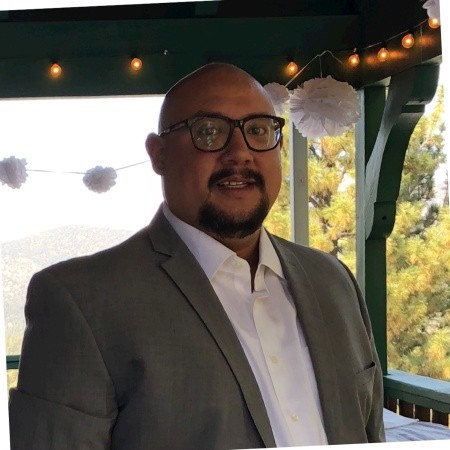
Carlos Salazar is CEO of Bear Ag and Tru-Zero
Connect with Carlos Salazar


